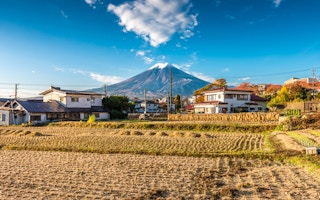Japanese scientists have found a potential answer to the biofuel dilemma that if you grow crops for energy, you have to sacrifice crops for food.
They report that they can now ferment rice to deliver ethanol, while making silage for cattle feed –and that it can all be done on the farm without need for any expensive off-site processes.
Mitsuo Horita, of the National Institute for Agro-Environmental Sciences in Tsukuba, Japan, and colleagues write in the journal Biotechnology for Biofuels that they used a process of solid-state fermentation known to temperate zone farmers everywhere: grass or cereal is harvested, compressed, sealed, and fermented in the absence of oxygen.
Pickled product
The outcome is a pickled product that is both nourishing and palatable to cattle during the winter months − and a mix of liquid hydrocarbon products that must be disposed of in ways that won’t pollute water supplies or harm fish and wildlife.
“
What we’ve now demonstrated is a complete and scaled-up system that shows its potential in a practical on-farm situation. Instead of a complicated process requiring special facilities, our system simply builds upon traditional processes already used by farmers for producing silage for animal feed.
Mitsuo Horita, scientist at the National Institute for Agro-Environmental Sciences
The Japanese research team packed harvested whole rice plants with yeast and enzymes into bales wrapped in impermeable film.
Sugars and starch in the rice were converted by the yeast into ethanol, which could then be drained and distilled for fuel. And at the end of the process, the bale still contained nourishing silage.
For each bale, after six months of fermentation, the researchers collected 12.4kg of pure ethanol, or alcohol − which is about 10 times more than anyone could expect from traditional silage fermentation. The bales also leaked effluent ethanol at the rate of about 1.7kg a bale.
Biofuels are often seen as a solution that creates more problems. Will increased “green energy” mean high grain prices? Will specialist biofuel crops escape from the farms and cause wider problems for the environment? Could biofuels be more efficiently made from waste, or from natural sources not for the moment of any commercial value? This new approach sidesteps some nagging questions.
“Generally, the bottlenecks in second-generation biofuel production include the need for large facilities, bulky material transport, and complicated treatment processes, all of which are costly and consume a great deal of energy,” Horita says.
“What we’ve now demonstrated is a complete and scaled-up system that shows its potential in a practical on-farm situation. Instead of a complicated process requiring special facilities, our system simply builds upon traditional processes already used by farmers for producing silage for animal feed.
Zero waste
“It results in a high yield of ethanol, while producing good quality feed, with zero waste.”
In effect, the team has delivered fodder and tractor fuel in one step.
Fermentation takes longer than usual, but no extra energy needs to be supplied for the process, and the alcohol drawn off contained no insoluble particles, and so would make it easier to handle.
The researchers used a vacuum distiller to get at 86 per cent of the baled alcohol, but they concede they must do more to improve both the yield and the recovery of the ethanol.
Meanwhile, they point out, they have shown the way to an on-farm fuel system that could help farmers in the developing world, and which exploits the same field for food and fuel at the same time.










